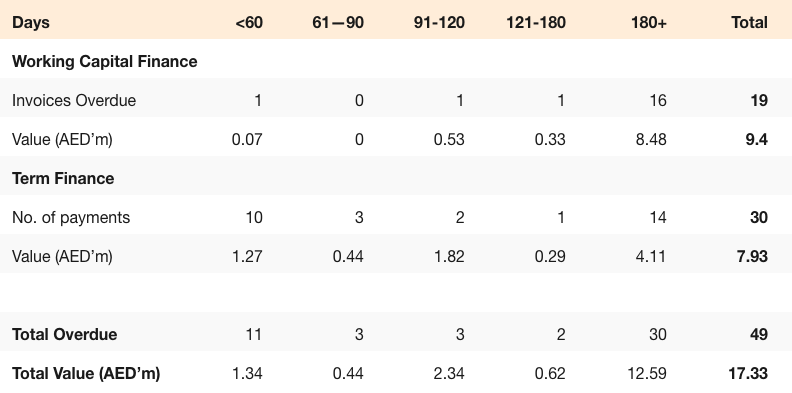Risk Assessment
Risk And Credit Assessment
SME submit loan application
Beehive performs risk assessment
Physical address is verified
Approved application listed
Beehive is dedicated to listing only established, demonstrably creditworthy SMEs on our platform. That principle is not a slogan; it is the operating standard that shapes every stage of our work—from the earliest screening of an application to the final day of a facility. Each funding proposal is subjected to a rigorous, multi-layered credit and risk review that blends our proprietary decision engine with robust external verification. The objective is straightforward yet exacting: produce assessments that are consistent, explainable, and genuinely useful, thereby supporting responsible lending decisions and reliable outcomes for all stakeholders.
Two Complementary Assessment Pathways—One Uncompromising Standard
SMEs come to market with different documentation realities, so our approach meets them where they are while holding the bar steady.
- Financials-Based Assessment
When audited or management accounts, bank statements, and supporting schedules are available, we perform a deep, structured analysis. Our systems extract hundreds of data points spanning liquidity and leverage, cash-flow dynamics and volatility, seasonality patterns, customer concentration, margin stability, and working-capital behaviour. Those signals are synthesized into a comprehensive credit report that anchors the underwriting view and informs the final recommendation. - Non-Financials (Alternative-Data) Assessment
When traditional financial statements are unavailable or incomplete, we deploy a document-light but data-dense pathway. This draws on verified alternative sources—bank-transaction analytics, KYC/AML records, supplier and customer references, sector benchmarks, digital-footprint signals, and targeted third-party checks. Crucially, this route does not dilute standards. It substitutes different, validated inputs to arrive at an equally robust, evidence-based understanding of creditworthiness.
Both pathways feed a single proprietary scoring model and a unified risk-rating framework, ensuring like-for-like comparability across proposals regardless of the documentation set.
A rule-based AI layer—trained on a decade of SME lending experience—supports both routes. It reviews submissions systematically, surfaces patterns and anomalies, and flags inconsistencies for expert follow-up. The blend of automation and analyst judgment allows us to move with pace while preserving depth, accuracy, and auditability.
Since 2014, our portfolio has consistently demonstrated resilient, high-quality performance. The full record, complete with outcomes, benchmarks, and longitudinal trends, is transparently presented on our statistics page (https://www.beehive.ae/statistics/).
What We Score: Three Core Pillars
- Repayment Strength
We examine the borrower’s capacity to meet obligations as scheduled, looking at:- Trajectories in profitability and revenue, including concentration and durability
- Liquidity profiles and near-term coverage ratios
- Working-capital management and seasonal effects
- Evolution of debt and equity positions
- Bank-statement cash-flow patterns, stability, and stress tolerance
- Repayment history with Beehive and other lenders
- Supplier repayment behaviour and trade terms
A central indicator is Repayment Coverage Strength, derived from bank-statement analytics comparing monthly cash coverage to the proposed installment:
-
- Excellent: > 3× monthly repayment
- Very Strong: 2.5×–3×
- Strong: 2×–2.5×
- Owner Commitment
We gauge stability, alignment, and financial stake for all shareholders holding >5%. Factors include UAE residency and family ties (e.g., dependents in school), property ownership, personal debt levels and repayment behaviour, equity invested since inception, dividend or withdrawal discipline, and current credit-bureau scores. In a dynamic market like the UAE, durable owner commitment is a decisive predictor of follow-through. - External Reports & Field Validation
Internal analysis is reinforced by trusted third-party intelligence and on-the-ground verification, including:- Al Etihad Credit Bureau (AECB) for federal credit data
- Thomson Reuters World-Check for screening and watchlist intelligence
(Select retrieval from AECB and World-Check is automated via RPA (Robotic Process Automation), reducing turnaround times and manual error.)
A mandatory site visit by the Beehive Credit Team validates actual operations, observes the working environment, and includes structured management interviews to triangulate facts and context.
From Data to Decision: Scoring & Risk Ratings
All verified inputs, traditional financials or alternative signals flow into Beehive’s proprietary credit-scoring database. Each factor is proportionally weighted according to its predictive value in context (industry profile, business model, scale, operating history, and the assessment pathway). The output is a composite score mapped to Beehive’s risk-rating categories, offering a transparent, comparable view of creditworthiness and estimated default likelihood across all proposals.
(A companion table details how composite scores align with rating bands.)
| Overall Score | Risk Rating |
|---|---|
| 90 - 100 | A+ |
| 80 – 89.9 | A |
| 75 – 79.9 | B+ |
| 70 – 74.9 | B |
| 65 – 69.9 | C |
| 60 – 64.9 | C - |
| < 60 | D |
The overall credit rating is based on 4 main credit parameters and their respective weighting as outline below.
| Breakdown | |
|---|---|
| Bank statement | 45% |
| Financial statement | 35% |
| Business profile | 10% |
| Shareholder profile | 10% |
Continuous Monitoring After Approval
-
Consistency: Two pathways, one standard, identical quality thresholds and evidence requirements.
-
Coverage: A wide lens on risk quantitative, qualitative, and alternative data yields a well-rounded view.
-
Confidence: Decisions are grounded in data-rich analysis that is explainable, comparable, and continuously updated.
The repayment strength classification and credit or risk rating provided by Beehive should not be taken as advice about whether money should be lent to the business or not.
support backed by a Capital guarantee.
Owner Commitment: Excellent
Analysis of External Reports: Excellent
No Corporate / Parental Guarantee.
Repayment Strength: Excellent
Owner Commitment: Excellent
Analysis of External Reports: Excellent
Repayment Strength: Very Strong
Owner Commitment: Very Strong
Analysis of External Reports: Very Strong
Repayment Strength: Strong
Owner Commitment: Very Strong
Analysis of External Reports: Strong
Repayment Strength: Strong
Owner Commitment: Strong
Analysis of External Reports: Moderate
Repayment Strength: Moderate
Owner Commitment: Strong
Analysis of External Reports: Moderate
Repayment Strength: Moderate
Owner Commitment: Moderate
Analysis of External Reports: Low

